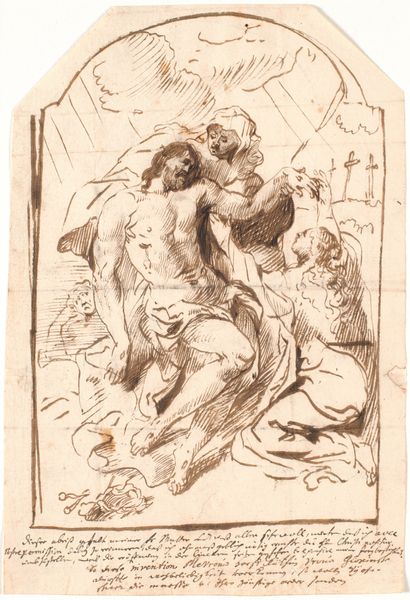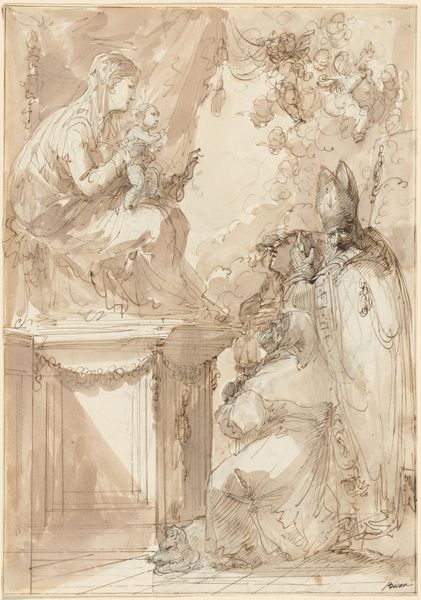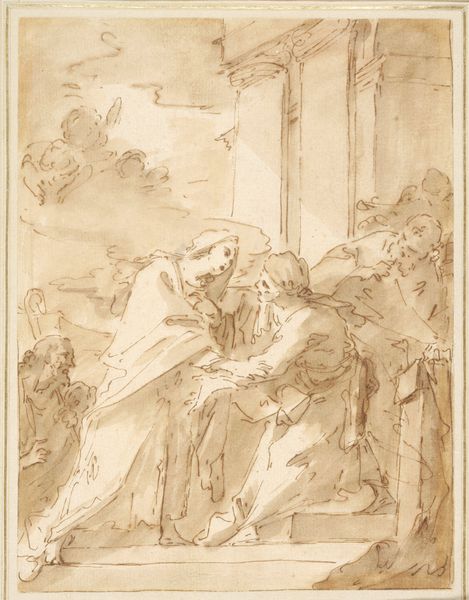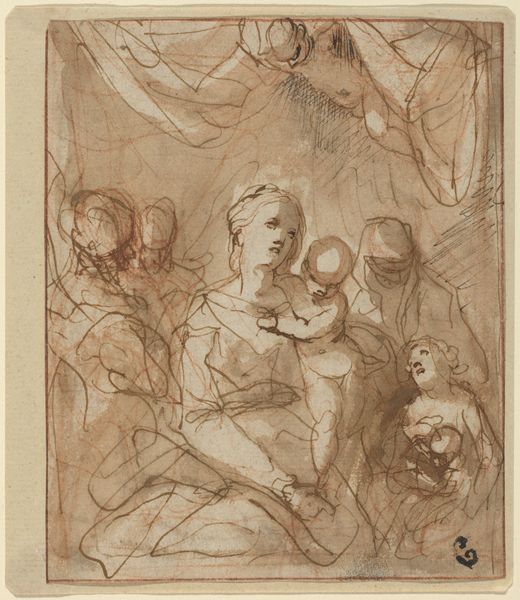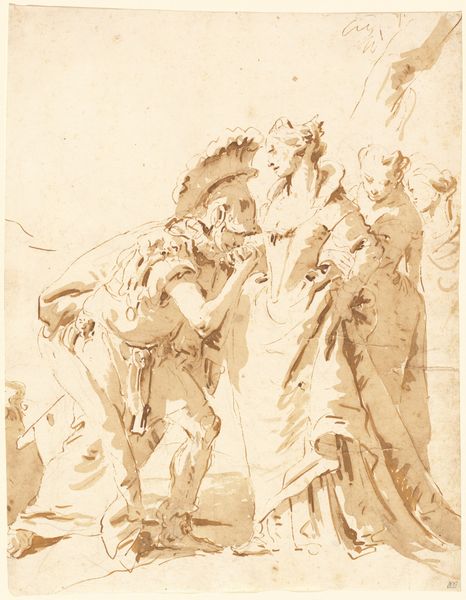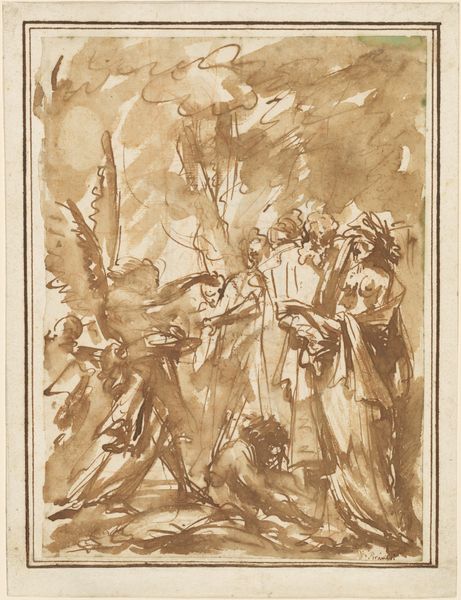
drawing, paper, ink
#
drawing
#
narrative-art
#
baroque
#
pen sketch
#
pencil sketch
#
figuration
#
paper
#
ink
#
ink drawing experimentation
#
history-painting
Dimensions: sheet: 18.9 × 14 cm (7 7/16 × 5 1/2 in.)
Copyright: National Gallery of Art: CC0 1.0
Curator: Here we have Sebastiano Ricci's "Christ and the Samaritan Woman," an ink drawing on paper from around 1718. It seems like a quick preparatory sketch, full of energy. Editor: Yes, the dynamism is palpable! Look at the bold strokes; it has a raw, almost urgent feel. The figures appear to emerge from the page itself. There's something very immediate about it. Curator: Ricci was working within a Baroque tradition, of course, where drama and movement were highly valued. But the choice of this subject is interesting. Editor: Indeed. The encounter at the well is rife with symbolic significance. Water, in this context, often signifies spiritual cleansing, renewal, and the gift of life. The woman's vessel suggests both her worldly duties and her potential for grace. Curator: It highlights a crucial narrative—Jesus offering salvation to someone on the margins of society, a woman, a Samaritan. It speaks to the inclusive message at the heart of Christian teaching, even if expressed through the biases of 18th-century European sensibilities. How do you see that manifesting here? Editor: I see it in the slightly theatrical pose of Christ, one arm outstretched, almost like an invitation, or perhaps a benediction. Even in this quick sketch, you sense the weight of cultural expectation around his image, versus the Samaritan woman's relative anonymity within the artistic rendering. Curator: And it was likely created for an elite audience that consumed imagery affirming those power dynamics, subtly reinforcing social hierarchies even while portraying a story of supposed spiritual egalitarianism. It reminds me that representations of this story change as cultures do. Editor: A powerful reminder that even sacred narratives become enmeshed within broader societal currents. I'm struck once more by Ricci's expressive lines. It's a simple scene, but carries within it layers of social history. Curator: Agreed. These sketches offer fascinating glimpses into both the artistic process and the broader cultural contexts in which art is produced and received. It's a testament to the story’s enduring power and its flexibility through the years.
Comments
No comments
Be the first to comment and join the conversation on the ultimate creative platform.
